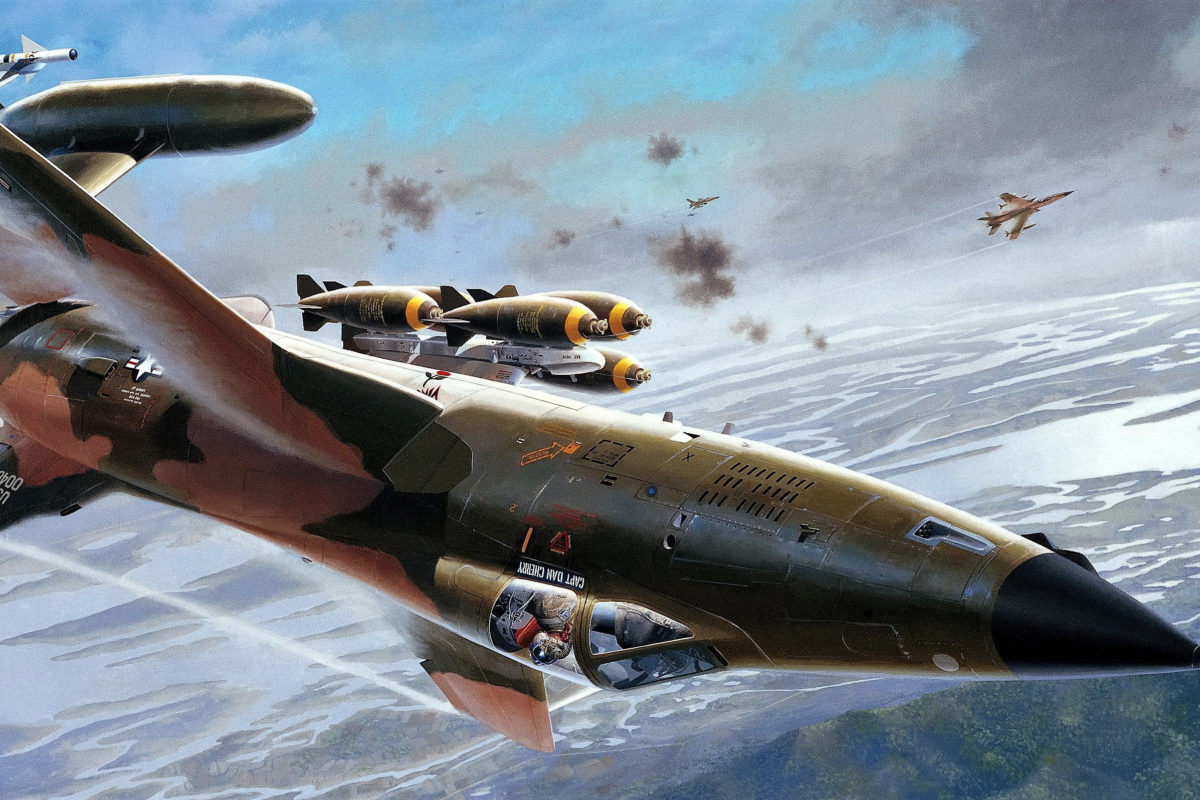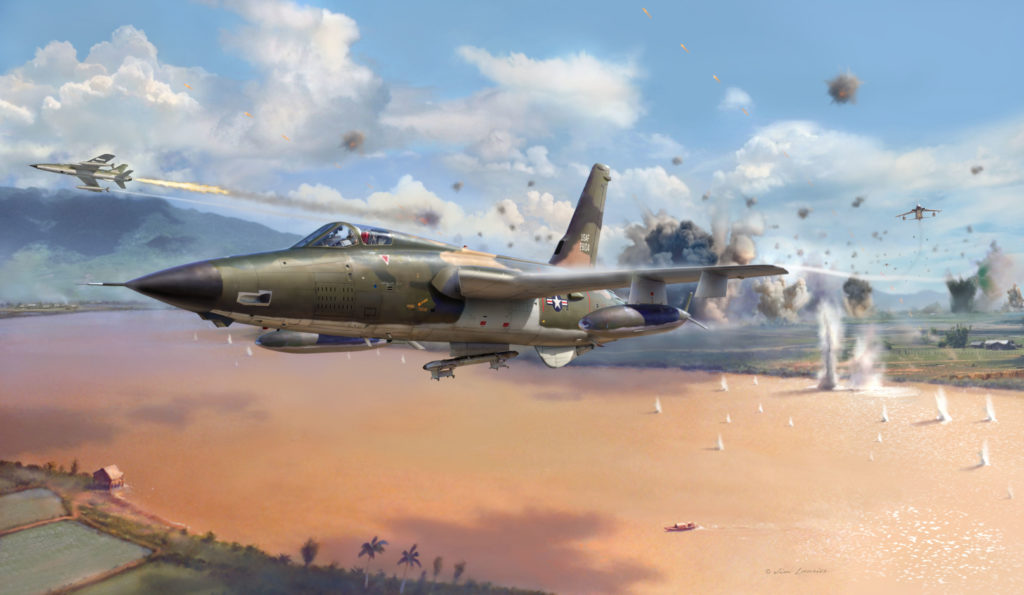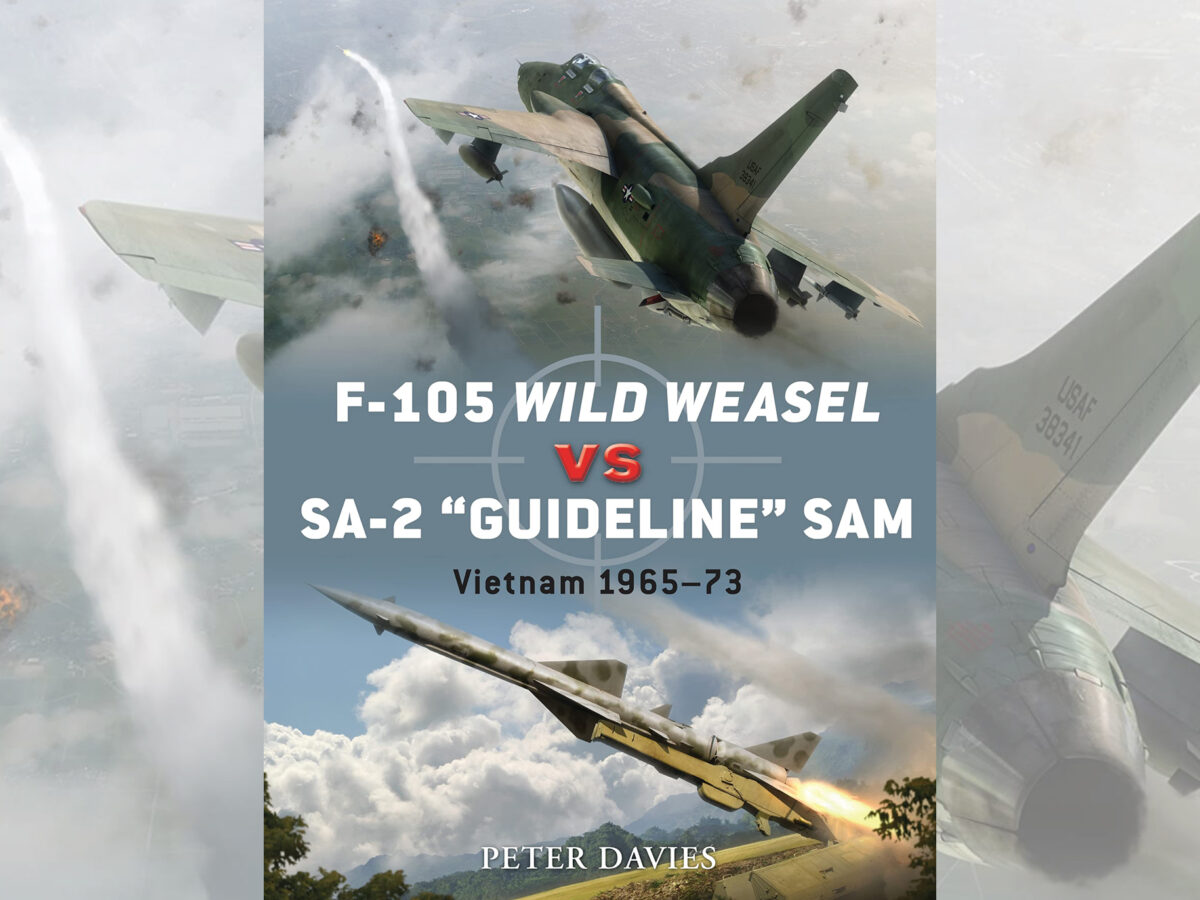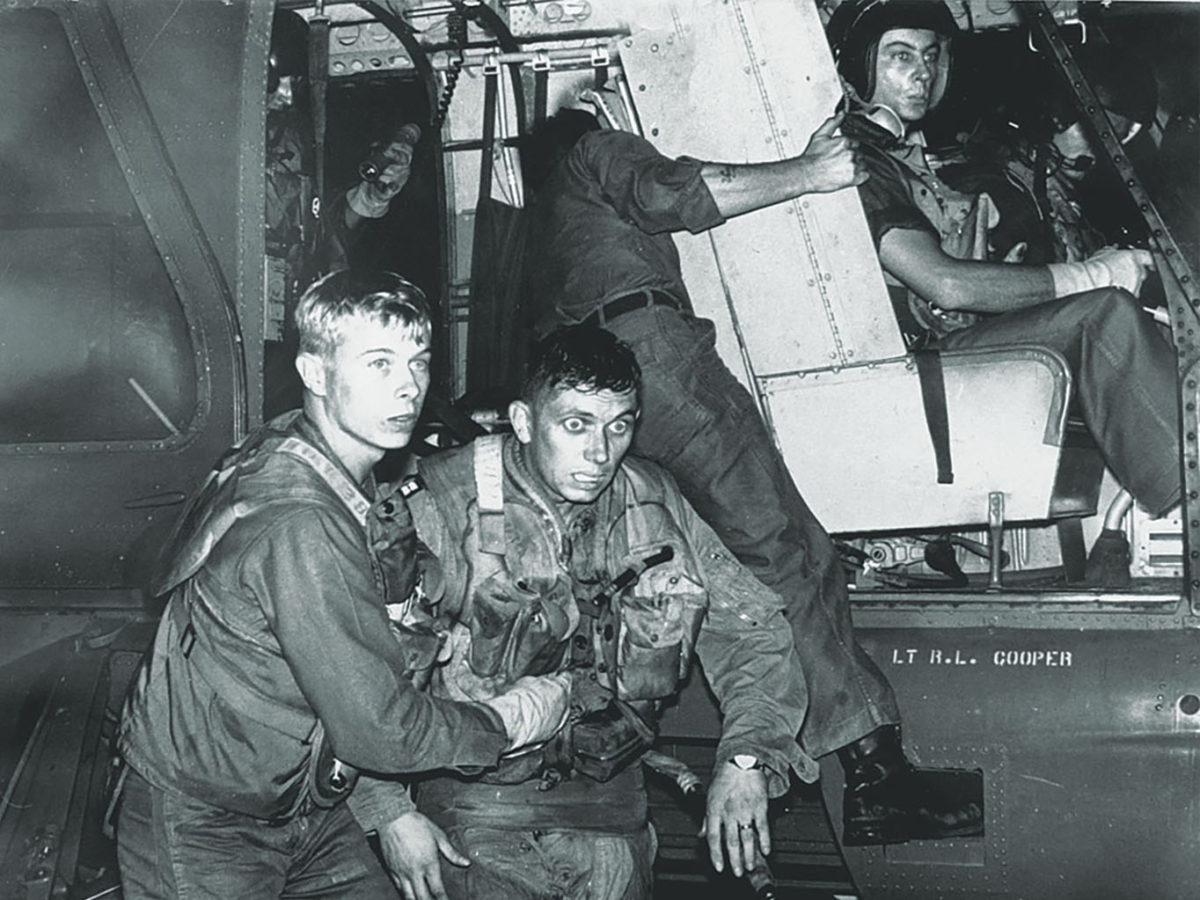The problem of aircrews being killed by premature bomb detonation began early in the Vietnam War. The first known instance occurred on November 12, 1965, when Captain William Miller was flying a Republic F-105D on a mission to North Vietnam. His flight of four Thunderchiefs was still over Thailand and the six 750-pound M117 bombs he was carrying should have been secure.
Captain Miller was killed instantly when the proximity-fuzed bombs exploded as he approached a Boeing KC-135 tanker to refuel. The M188 variable-time proximity fuzes were supposed to arm only after being released from the bomb rack. But somehow one of the World War II–era fuzes had become armed before release. Then, as the fighter-bomber closed on the tanker, the small radar beam emitted by the fuze on one of the bombs detected the aircraft and detonated. The fuzes were then temporarily withdrawn from service to determine the cause.
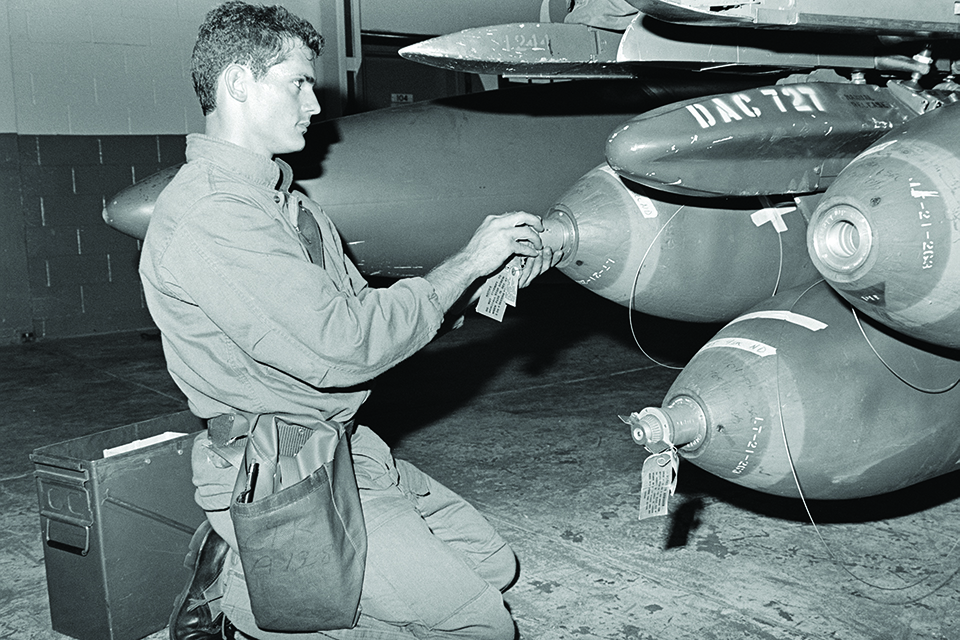
The 4525th Fighter Weapons Wing at Nellis Air Force Base in Nevada was tasked with identifying the problem. The project was assigned to Captain John Morrissey, who conducted the tests that subsequently revealed the reasons behind the accident.
The first thing Captain Morrissey discovered was that the proximity fuzes had been designed during WWII for internal carriage by B-17 and B-24 bombers. In fact, the applicable technical order dated from the early 1940s. If carried externally—as they were on the F-105Ds—they were limited to a maximum speed of 240 mph (204 knots). Yet the bombs were typically carried by F-105s at airspeeds of 550 knots or greater.
bombs in short supply
Until the advent of the Vietnam War, the United States’ national military policy had emphasized “mutually assured destruction,” with atomic weapons as a deterrent. Consequently, development of new modernized conventional weapons lagged badly. In essence, the U.S. Air Force’s Mach 2–capable fighters were forced to carry leftover WWII bombs and fuzes simply because there was nothing else available. As Lt. Col. Billy Sparks reported, “They were very old and had a problem with detonation if dropped any distance, even without fuzes installed.”
The proximity fuze was designed to detonate the bomb in the air to suppress anti-aircraft fire over a wide area. These old fuzes were armed by a clock-like mechanism after a set number of turns of a small propeller located on the fuze’s nose, with the arm-time set prior to departure. Once armed, the bomb detonated when the fuze’s small radar unit detected anything that would reflect a radar beam—a ground target or, in Miller’s case, the KC-135 tanker.
Only limited quantities of these WWII leftovers were available. Despite official denials to Congress by Secretary of Defense Robert McNamara, the supply of M117 bombs was also critical. In fact, as the war heated up in the spring of 1966, when I served as an F-105D pilot with the 333rd Tactical Fighter Squadron of the 335th Tactical Fighter Wing, we completely exhausted the supply. The war reserve munitions stockpiles on Guam had been purged—barged out to sea and dumped—to save on storage costs. Consequently, the Department of Defense was forced to purchase replacements from the reserve stockpiles of allied nations. And despite continuing U.S. losses to anti-aircraft fire, for several weeks we flew fighter-bomber missions into heavily defended North Vietnam armed only with the airplane’s 20mm cannon.
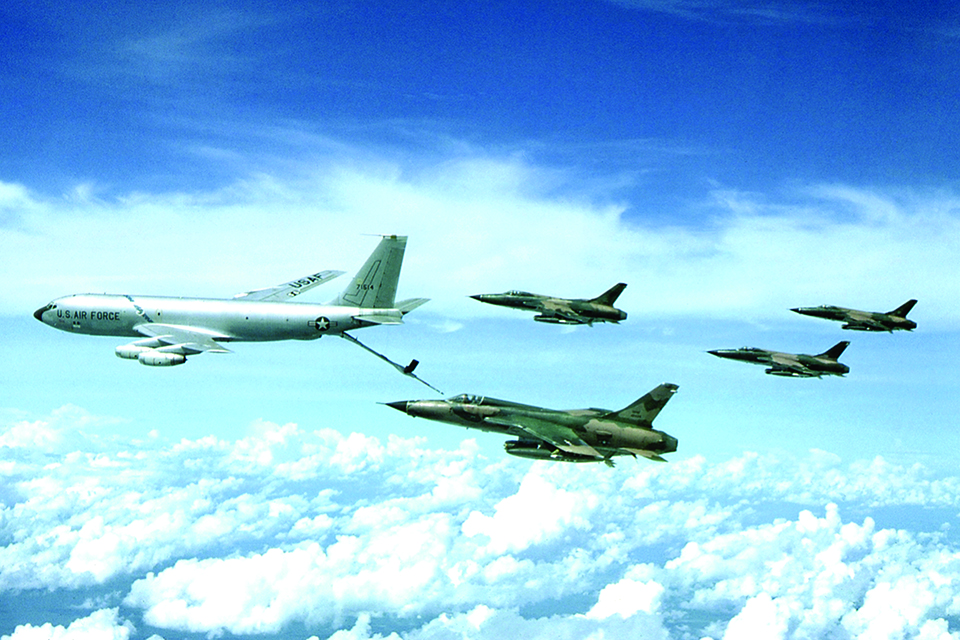
Morrissey’s subsequent flight tests with the M188 proximity fuzes immediately identified the problem. It involved a combination of both high airspeed and the safety wire used to restrain the small arming propeller. Normally the fuze’s safety wire was pulled when the bomb released. This freed the propeller to spin and arm the proximity fuze. But at the high speeds typical of the F-105D, the fuze safety wire sometimes vibrated and broke, allowing the propeller to spin and arm the bomb prior to release. Once the cause of the premature detonation was identified, the fuzes were modified to make the bombs safe to carry.
Recommended for you
Unfortunately, the problem was larger than just one mishap and one type of fuze. In November 1967, the McDonnell F-4 Phantom–equipped 366th Tactical Fighter Wing, located at Da Nang Air Base in South Vietnam, lost eight aircraft and 16 crewmen in rapid succession. At first the losses were attributed to a so-called “golden BB” hit—wherein the aircraft rolled into a dive and was hit by a lucky shot from anti-aircraft fire, then exploded, leaving no survivors. (Medal of Honor recipient Captain Lance P. Sijan did survive a bomb explosion on his F-4, and despite being severely wounded he ejected successfully, only to be captured later and die of his untreated wounds as a POW.)
Consequently, the wing’s director of operations, Colonel Frederick C. “Boots” Blesse, attempted to stop all bombing missions to investigate the problem. “But we had no proof that anything was wrong,” wrote Blesse in his book Check Six, adding, “…we were told ‘sometimes you get losses like those in combat.’”
fuze problem finally identified
Blesse described a “Skyspot” mission that ultimately provided the clue needed to resolve the problem. When a target was covered by clouds, ground-based Skyspot radar was used to vector a flight of four or more fighters to a point at which a countdown was started by the radar controller. Then, in close formation, upon command from the controller, all aircraft released their bombs simultaneously.
On this occasion, however, a hurry-up vector to the release point had left the flight’s second element—ships three and four—spread out by several hundred yards. As the flight leader’s bombs released, crew members in the second element saw one of the leader’s bombs explode a few feet beneath the aircraft. This destroyed both aircraft in the lead element and killed all four crewmen. Only now they knew where to look for the cause of these heretofore unexplained losses.

The problem involved the newly introduced long-delay electric FMU-35 fuzes. Something was causing them to activate prematurely. Yet incredibly, despite now having eyewitnesses, the leadership in higher headquarters didn’t agree. Thus, because the wing didn’t have anything else, aircrews were ordered to continue using the new fuzes. But the order didn’t say the bombs had to be armed. So, Blesse had subsequent missions launched with the bombs unarmed, and the losses stopped immediately. Sometime later these fuzes were withdrawn and replaced by the improved FMU-72.
new fuze’s test turns deadly
In 1968 the Air Force accepted for testing the new electrically actuated FMU-57 proximity fuze, destined to replace the obsolete fuze that had cost Miller his life. It was designed specifically to counter the surface-to-air missile and anti-aircraft fire that was taking a heavy toll on U.S. fighters.
Testing of the new proximity fuzes was assigned to the Operational Test and Evaluation (OT&E) section of the 4525th Fighter Weapons Wing at Nellis AFB. Again, Captain Morrissey was appointed the project officer. The wing had just received 36 fuzes from the manufacturer, Saunders Industries, for test and evaluation. Because the new fuzes were urgently needed in Southeast Asia, to expedite the approval process Headquarters Tactical Air Command allowed the use of live munitions for the tests rather than inert shapes. Using live bombs, Morrissey had already dropped more than half of them successfully when the tests were interrupted by his deployment to Southeast Asia as team leader of a munitions introduction team for a related project. In his absence, another member of the OT&E section, Major Robert L. Chastain, was assigned to complete the tests.
On December 17, 1968, Major Chastain resumed the fuze testing. The mission of the two-ship flight of F-105Ds was to complete the evaluation of these modernized electric proximity fuzes. Each aircraft was loaded with six M117 bombs.
Chastain, a recent graduate of the Air Force Aerospace Research Pilot School, was flying the number-two position on Major John O. Rollins II’s wing. With the call-sign “Winder Flight,” they departed at 10 a.m. and approximately five minutes later entered the Nellis Range III weapons complex. The six bombs on each aircraft were set to be dropped individually. To ensure the safe separation of the aircraft from the bomb blast, each electrically activated fuze had a safe-arm time set for six seconds.
The test fuzes had been installed and inspected by Air Force munitions specialists, then checked by Major Rollins and a representative of the fuze manufacturer. The test plan called for a 30-degree dive angle, with each bomb released at 470 knots 5,000 feet above the ground. Six single “hot” passes were to be flown by each pilot against the designated target.
Rollins was first, and all six of his bomb drops were normal. The only discrepancy involved a bomb that was not an air burst but rather exploded upon ground contact. (It would have been a dud except for the tail fuze used as a safety measure.)
Then it was Chastain’s turn. His first pass was a dry run to check bomb-release conditions. On the second pass he toggled his first bomb but it hung up momentarily, then released cleanly three seconds late.
Three minutes later, while being tracked by radar and a series of four movie cameras, Chastain rolled in on his second hot pass. The Air Force accident report noted that this pass was normal in all respects. Film footage showed the bomb released normally, but just a few feet below the F-105D it exploded, destroying the aircraft. Major Chastain’s body was found still strapped in his ejection seat.
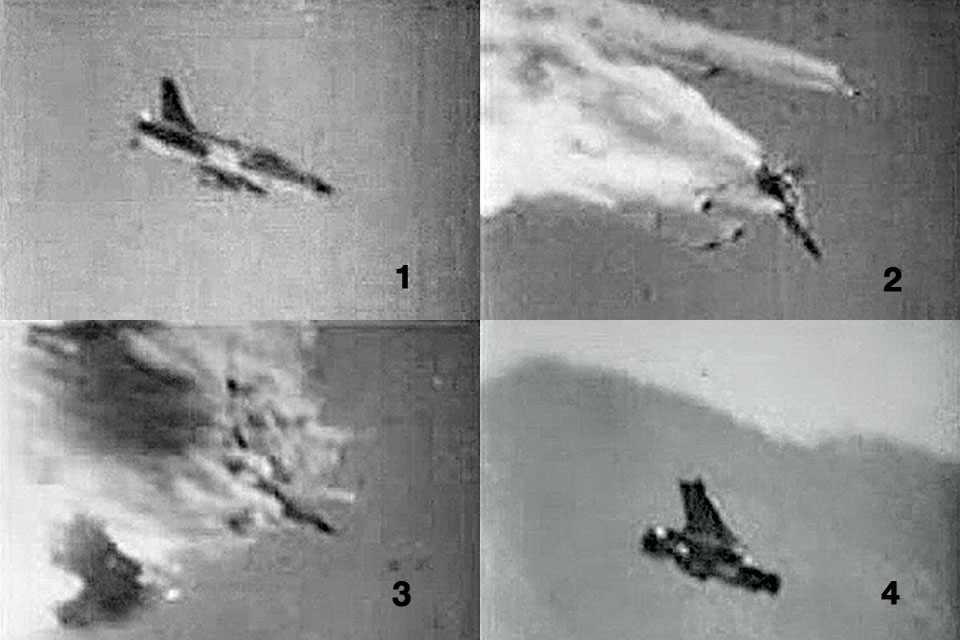
When the 36 test fuzes had arrived at Nellis for testing, OT&E section pilots Morrissey and Major Guy Pulliam immediately questioned their fail-safe circuitry. There appeared to be a fatal failure path that could lead to premature ignition. When they visited Saunders Industries in Hanscom Field, Mass., for their initial briefing on the new proximity fuze, they brought up their suspicions.
Subsequently they submitted a letter regarding their concerns through the fighter weapons wing to Headquarters Tactical Air Command, then ultimately to Air Force Systems Command and the manufacturer. But Morrissey described the response they received as: “Leave the heavy intellectual lifting to us. You just drop the bombs.”
The first commandment for all bomb fuzes had always been that they would not arm until far enough from the airplane to prevent damage if they detonated. With this newly designed proximity fuze, the internal battery was inert until a connector was pulled as the weapon released from the bomb rack. Then, upon battery rise, the proximity fuze was armed.
The problem identified with the new fuze was that upon release, a single failure in the wiring, from faulty construction during manufacture or damage from handling in the field, could cause it to detonate as its internal battery came online—approximately three to four feet below the aircraft!
test pilot had raised red flags
When Chastain was tasked with completing the tests he was briefed on the possible design flaw. And while he was fully aware of the urgency surrounding the new fuzes, his degree in geophysics gave him uncommon insight into the design and construction of the sophisticated electric proximity fuze he was to test.
In desperation Chastain and an unidentified officer flew to Washington, D.C., and visited the Pentagon. There they briefed their concerns to USAF director of operations Maj. Gen. George Simler, a fighter pilot and the former fighter weapons wing commander.
The two officers showed General Simler how, upon release, there were two places where a short or bad wiring could cause the fuze to function instantaneously once the battery reached full voltage. Simler agreed in theory with them, but noted that half of the fuzes had already been successfully tested. Since there was nothing else available, he overruled the two officers.
(It is worth noting that earlier, as a brigadier general and deputy for operations of the 2nd Air Division at Kadena Air Base on Okinawa, Simler had complained in a secret letter to Headquarters Pacific Air Forces about the lack of progress in improving fuzes for general-purpose bombs used on tactical aircraft. But now, as Headquarters USAF director of operations, he was under severe pressure from above to approve the new fuzes.)
As they departed Simler’s office, Chastain reportedly turned and said, “Boss, you are wrong about this, and I’ll prove it if it kills me.” They departed “mad as hell,” according to Lt. Col. Sparks.
On the day of Chastain’s accident, the cameras tracking his dive filmed the incident at 1,000 frames per second. This allowed documentation of every six inches of bomb travel. Analysis of the film showed that the second bomb he dropped exploded four feet below the bomb rack. The project officers had been right, but had been ignored. And Major Chastain died proving their point.
After redesign and testing by the Fighter Weapons Center, the new fuze finally entered service in 1973. Meanwhile, great strides had been made in both munitions and fuze design, including introduction of the “smart weapons” used so effectively today.
The 4525th Fighter Weapons Wing officers had spotted the problem and tried to be heard. Despite being rebuffed, they doggedly continued the tests. Until this mishap, however, both the aircrews and airplanes had been treated as “expendables.” It was Major Chastain’s dedication, integrity and bravery that ultimately saved many of us from a similar fate.
Korean and Vietnam war veteran John Lowery is the author of Life in the Wild Blue Yonder, which is recommended for further reading, along with Check Six: A Fighter Pilot Looks Back, by Frederick C. Blesse.
This feature originally appeared in the January 2021 issue of Aviation History. To subscribe today, click here!

